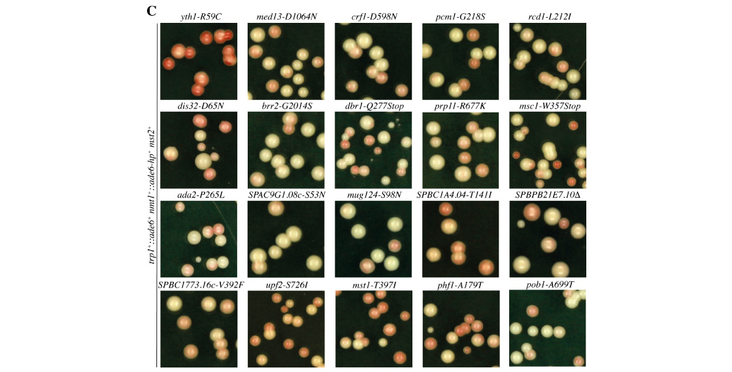Using an enhancer screen the Bühler identified new suppressors of RNA-mediated epigentic silencers. Their findings were published in PLOS Genetics in an article entitled "An enhancer screen identifies new suppressors of small-RNA-mediated epigenetic gene silencing".
Author summary
Besides silencing gene expression at the post-transcriptional level, small RNAs mediate the formation of silent chromatin that is heritable across generations. Over the last two decades, fission yeast has been serving as an excellent model organism to elucidate the mechanism of small-RNA-mediated heterochromatin formation at repetitive DNA. More recently, work performed with fission yeast revealed the existence of cellular activities that prevent small RNAs from triggering the formation of heterochromatin outside repetitive DNA. With the current work we are expanding the list of factors involved in these counteracting mechanisms. Our results support a model in which small-RNA-directed epigenetic gene silencing is controlled by pre-mRNA cleavage and underscore the importance of the mRNA 3`end processing machinery in warranting gene expression. Because the list of experimentally determined alleles that allow small-RNA-mediated heterochromatin formation keeps expanding, we speculate that fission yeast’s natural ecology may lead to the acquisition of silencing enabling genetic mutations as part of a biological bet-hedging strategy. We therefore advocate for the inclusion of non-laboratory strains in future research that aims at understanding the physiological relevance of small-RNA-mediated epigenetic gene silencing.
Abstract
Small non-protein coding RNAs are involved in pathways that control the genome at the level of chromatin. In Schizosaccharomyces pombe, small interfering RNAs (siRNAs) are required for the faithful propagation of heterochromatin that is found at peri-centromeric repeats. In contrast to repetitive DNA, protein-coding genes are refractory to siRNA-mediated heterochromatin formation, unless siRNAs are expressed in mutant cells. Here we report the identification of 20 novel mutant alleles that enable de novo formation of heterochromatin at a euchromatic protein-coding gene by using trans-acting siRNAs as triggers. For example, a single amino acid substitution in the pre-mRNA cleavage factor Yth1 enables siRNAs to trigger silent chromatin formation with unparalleled efficiency. Our results are consistent with a kinetic nascent transcript processing model for the inhibition of small-RNA-directed de novo formation of heterochromatin and lay a foundation for further mechanistic dissection of cellular activities that counteract epigenetic gene silencing.
Read the Publication in PLOS Genetics (Open Acess)
Abstract, author summary, figure and title from Shimada et al. (2021) PLOS Genetics published under a CC BY 4.0 license.
